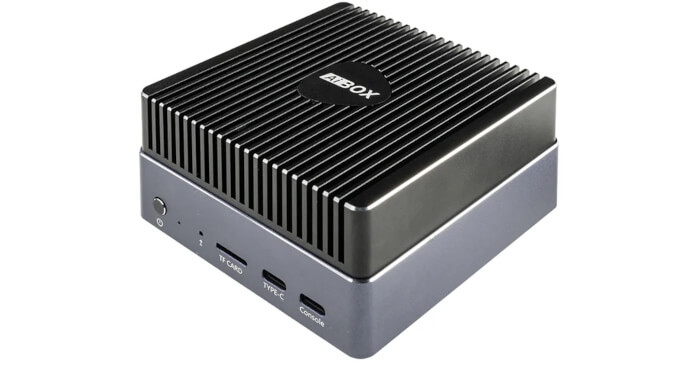This is a multi-part blog looking at the Firefly AIBOX-3588S Mini PC running Linux. This embedded fanless ARM-based computer sports an 8 core Rockchip RK3588S CPU with a maximum clock speed of 2.4GHz. It has an integrated ARM Mali-G10 MP4 quad-core GPU and a built-in AI accelerator NPU providing 6 TOPS of computing power. I’m using the Mini PC with 16GB of DDR5 RAM and a 32GB eMMC. This configuration is available on Firefly’s website for $299. This is not an affiliate link.
The AIBOX-3588S comes with Debian 12 (codename Bookworm). This mini PC is designed for AI including private AI model deployment, edge computing, data security, smart surveillance, and more. With regard to AI, you can deploy large-scale Transformer-based models and other large language models. There’s also support for RKNN model import/export together with support for various deep learning frameworks including TensorFlow, PyTorch and Caffe. The machine also provides 8k video decoding/video encoding.
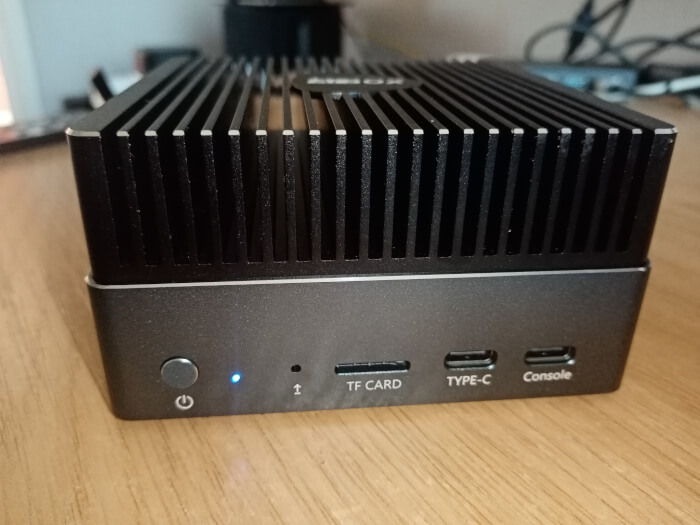
In this article I benchmark the AIBOX-3588S and compare it to a variety of single board computers (both ARM and RISC-V) as well as an Intel N100 Mini PC. The tests are run using the Phoronix Test Suite.
I’ll mainly focus on processor benchmarks for this article, but there are some other tests included.
Explanation of the legends used in the charts below:
RPI5 – Raspberry Pi 5 (ARM architecture)
OPi RV2 – Orange Pi RV2 (RISC-V architecture)
N100 – Intel N100 (x86_64 architecture)
OPi5 Max – Orange Pi 5 Max (ARM)
OPi R2S – Orange Pi R2S (RISC-V)
BPI-F3 – Banana Pi BPi-F3 (RISC-V )
AIBOX-3588S – Firefly AIBOX-3588S (ARM)
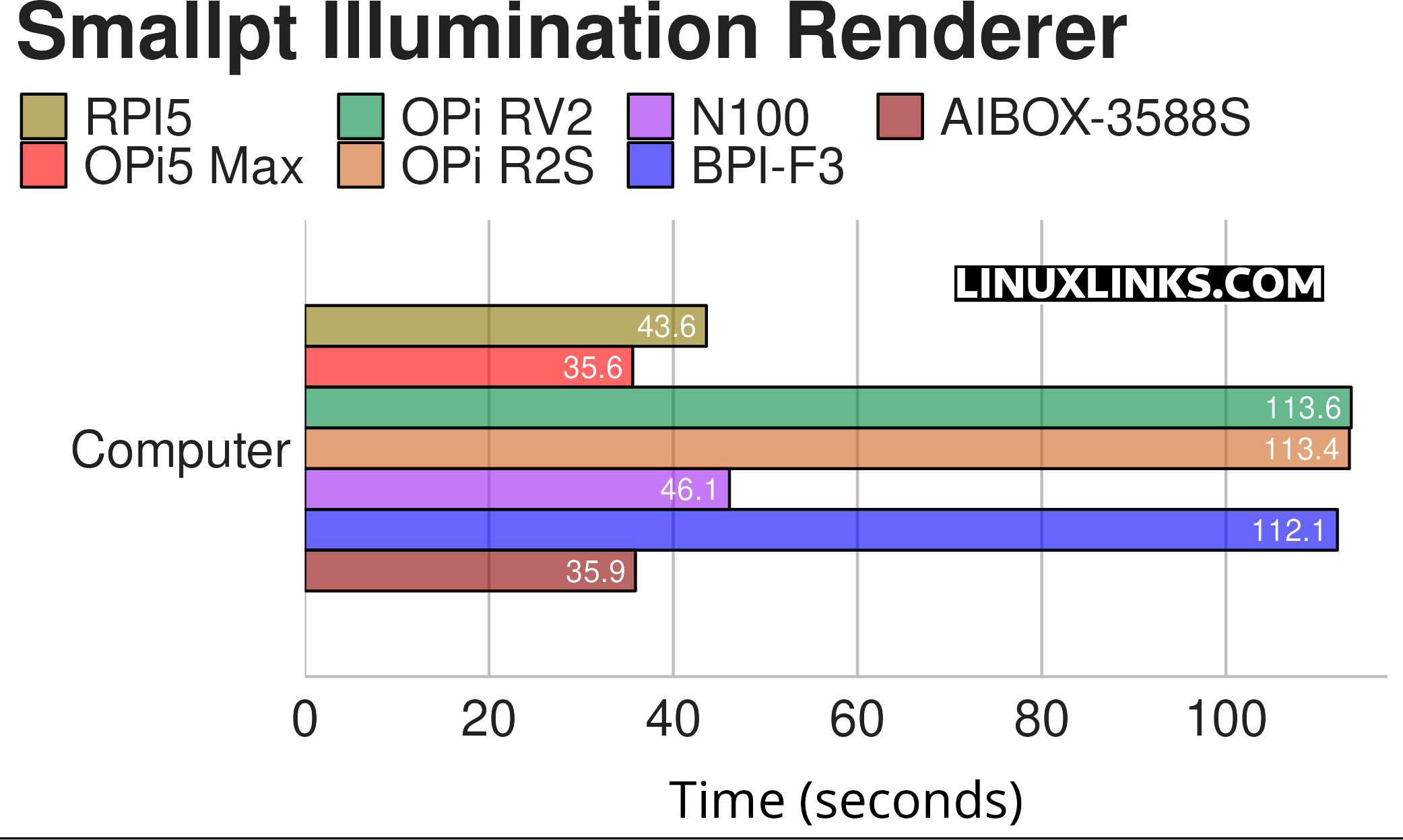
$ phoronix-test-suite benchmark smallpt
Smallpt is a C++ global illumination renderer written in less than 100 lines of code. Global illumination is done via unbiased Monte Carlo path tracing and there is multi-threading support via the OpenMP library.
With this benchmark, a shorter time indicates better performance. The Firefly AIBOX completes this test the second fastest, only very slightly slower than the Orange Pi 5 Max. The three RISC-V single board computers lag far behind. That’s a leitmotif in each test for the RISC-V.
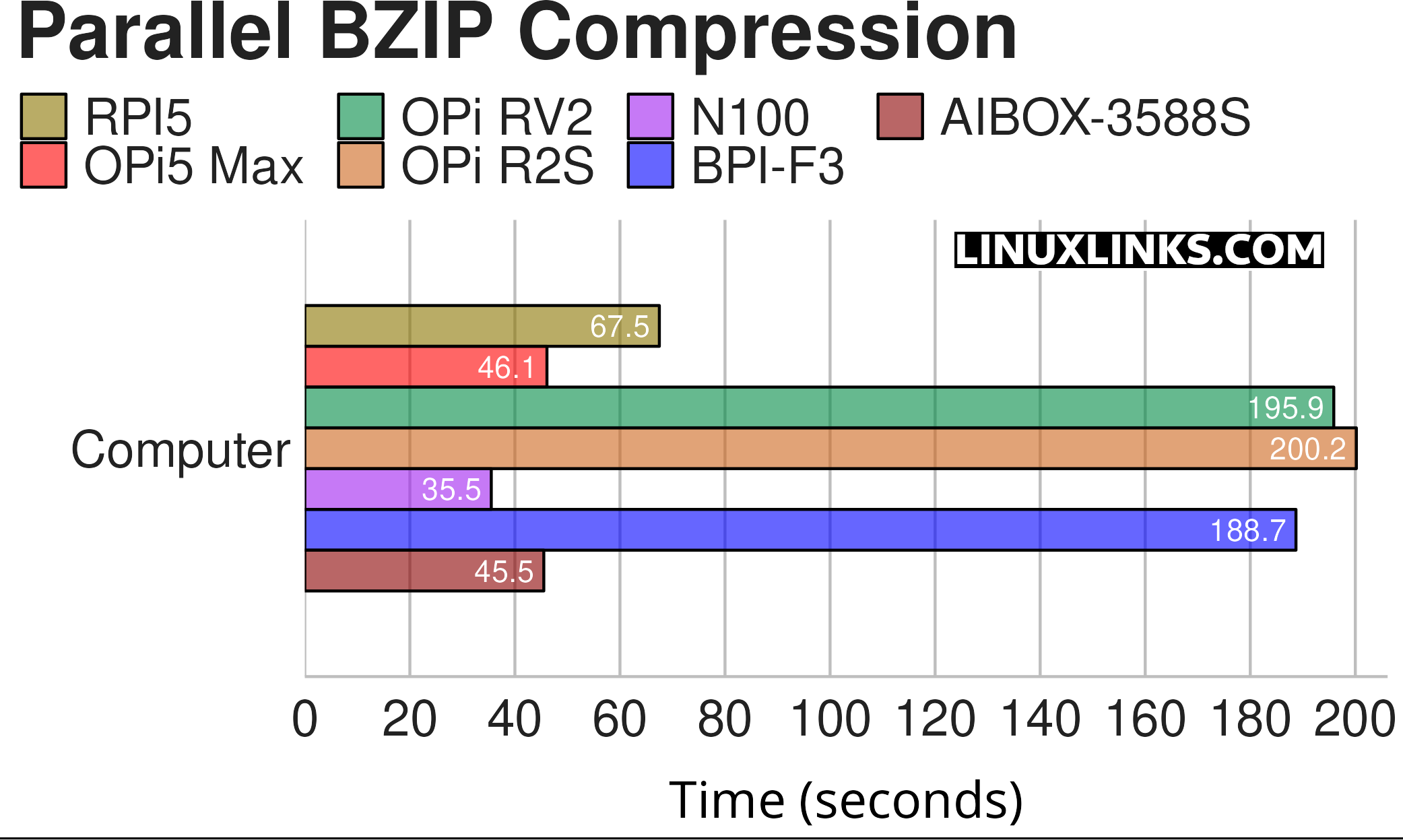
$ phoronix-test-suite benchmark compress-pbzip2
This test measures the time needed to compress a file (a .tar package of the Linux kernel source code) using BZIP2 compression.
Again a shorter time indicates better performance. In this benchmark the Intel N100 puts in the best shift, but the AIBOX isn’t that far behind, marginally faster than the Orange Pi 5 Max, and significantly faster than the Raspberry Pi 5.
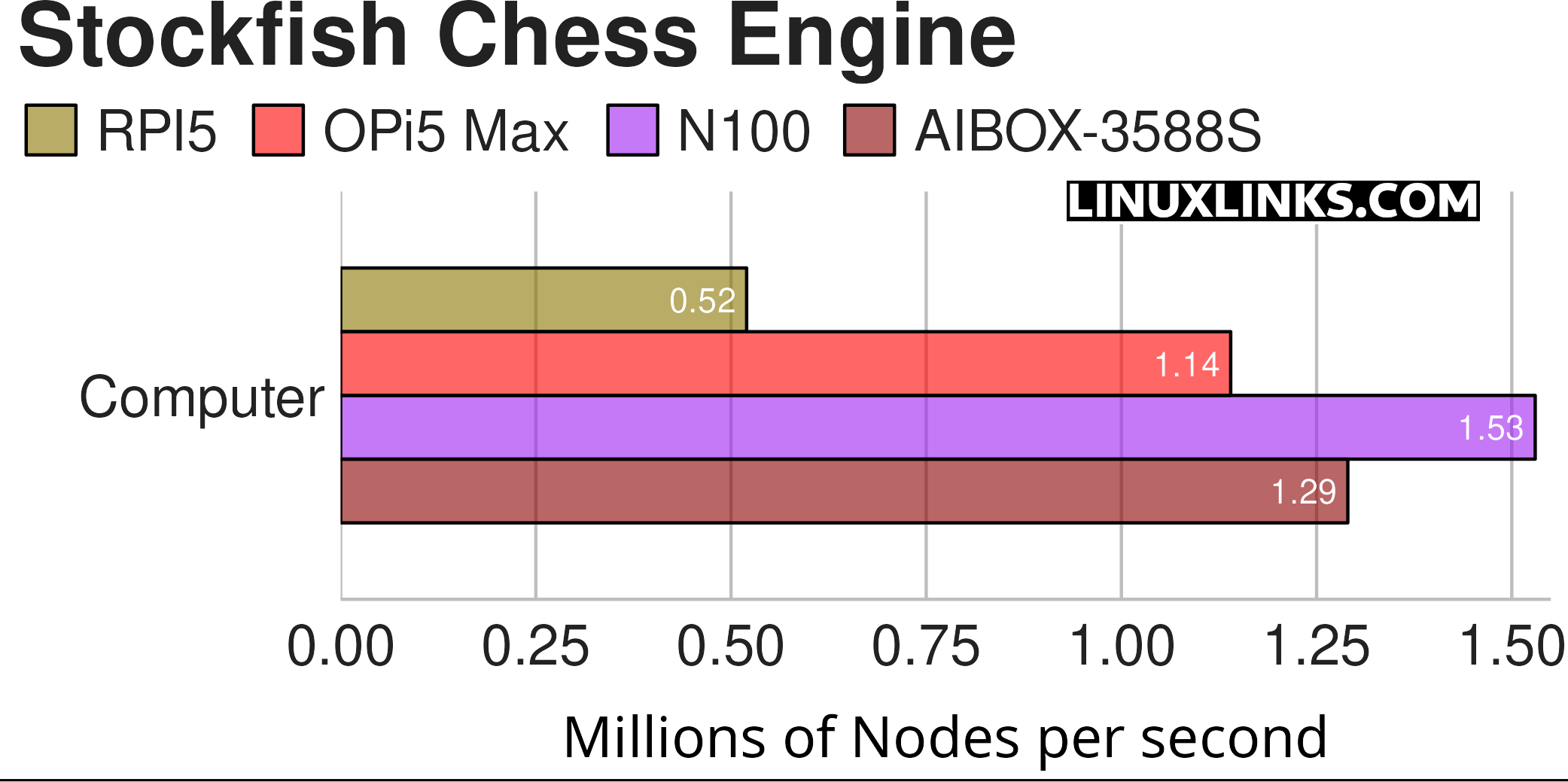
$ phoronix-test-suite benchmark stockfish
I wanted to benchmark with crafty, but it’s not available in the Phoronix Suite for the ARM architecture. Instead I’ll use Stockfish, an advanced open-source high performance and scalable C++ chess benchmark.
In this test, the higher nodes per second better. The AIBOX’s performance is about twice that of the Raspberry Pi 5, and slightly faster than the Orange Pi 5 Max.
The three RISC-V single board computers (Orange Pi RV2, Orange Pi R2S, and Banana Pi BPI-F3) are missing as the benchmark wouldn’t install.

$ phoronix-test-suite benchmark coremark
Coremark is a benchmark that measures the performance of central processing units (CPU) used in embedded systems.
Another solid performance result for the AIBOX-3588S, only slightly behind the Orange Pi 5 Max.
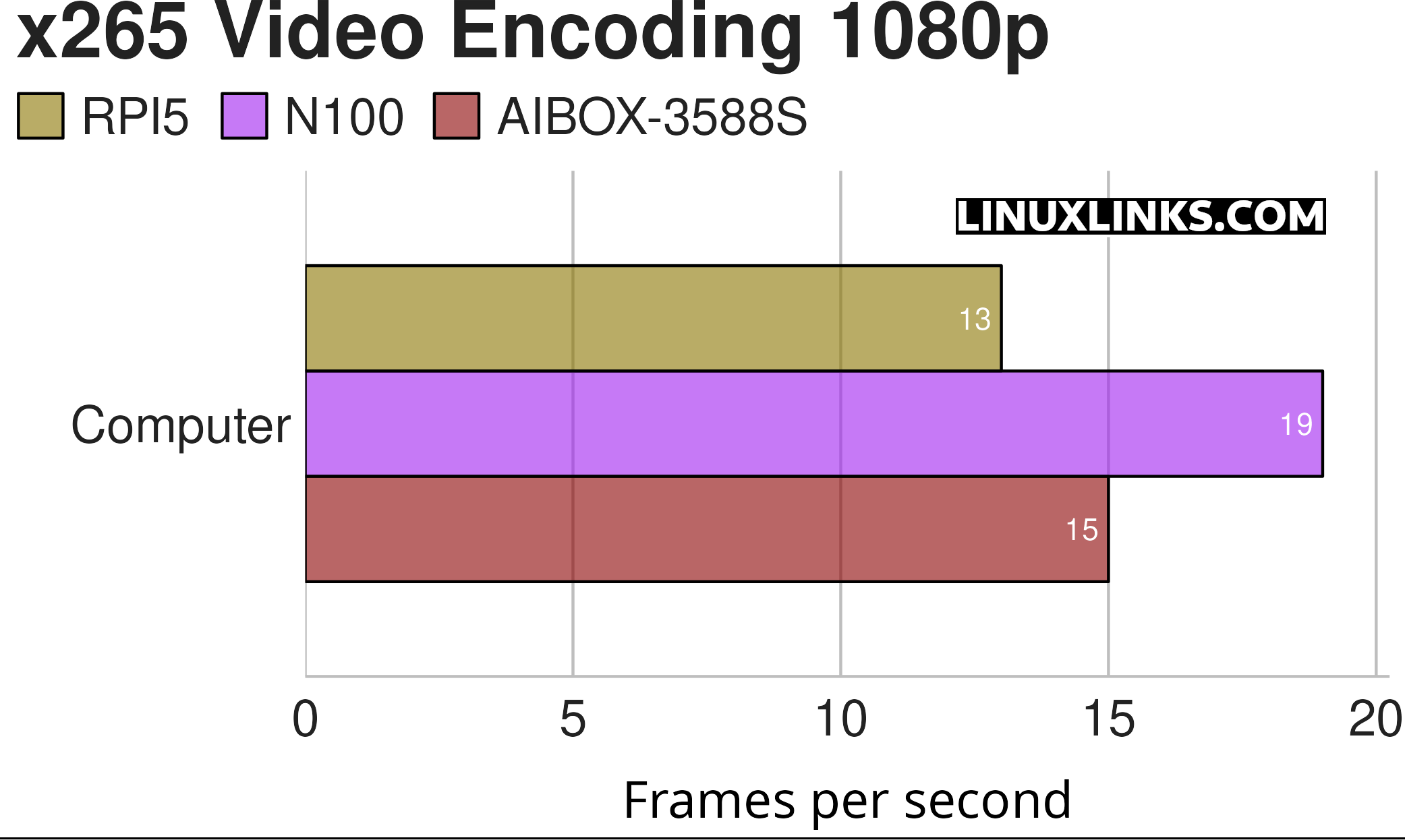
$ phoronix-test-suite benchmark x265
The results are nothing to write home about for any of these machines.
The Orange Pi 5 Max failed to complete the benchmark. The Orange Pi RV2 did complete the benchmark scoring a miserable 1.2 frames per second. The other RISC-V boards also scored extremely badly.
$ phoronix-test-suite benchmark x265
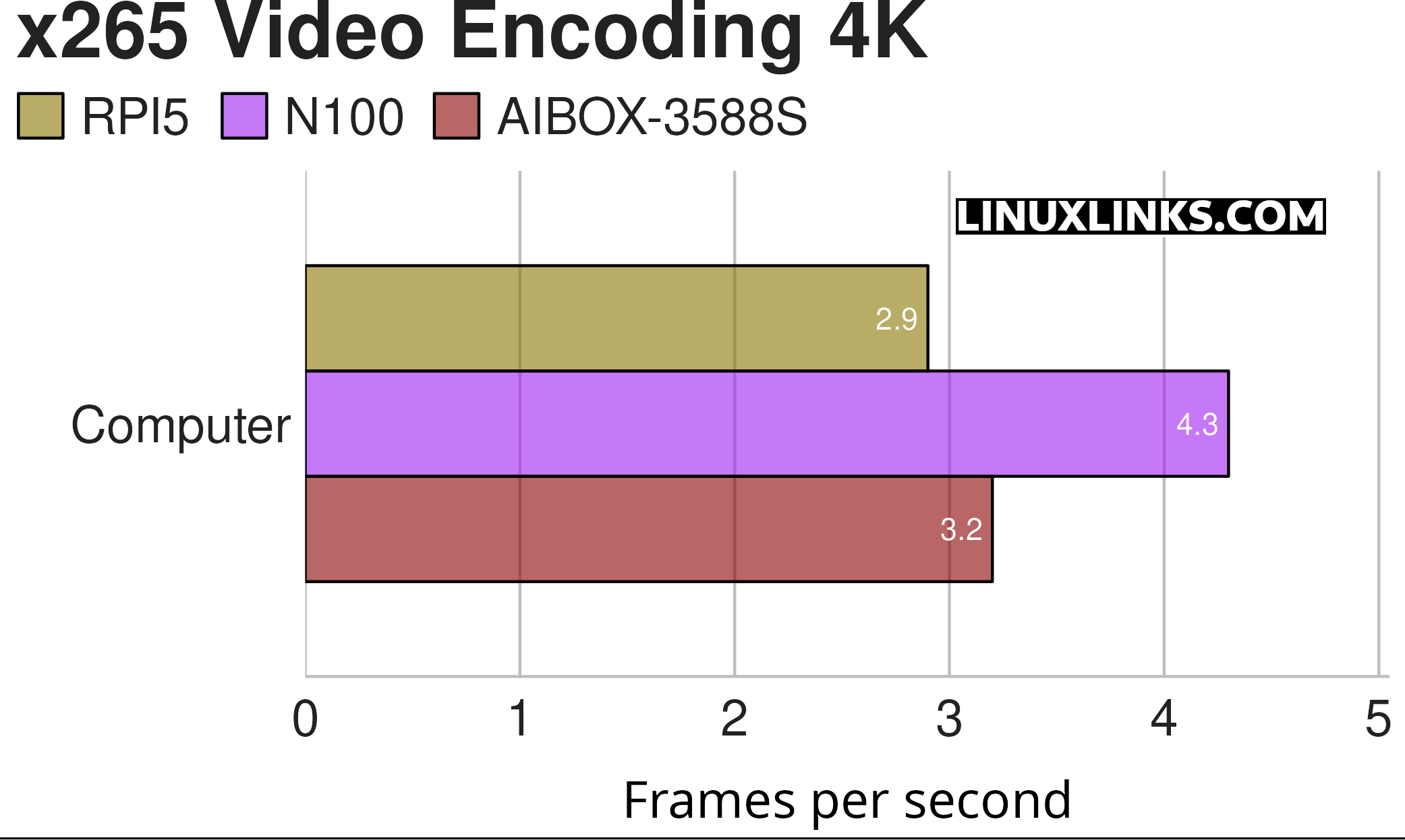

$ phoronix-test-suite benchmark ramspeed
The Firefly machine and the Orange Pi 5 Max perform well in this test courtesy of their DDR5 RAM. The Raspberry Pi 5 and Intel N100 machine have only DDR4 RAM. The RISC-V boards didn’t complete this benchmark so no results are shown.
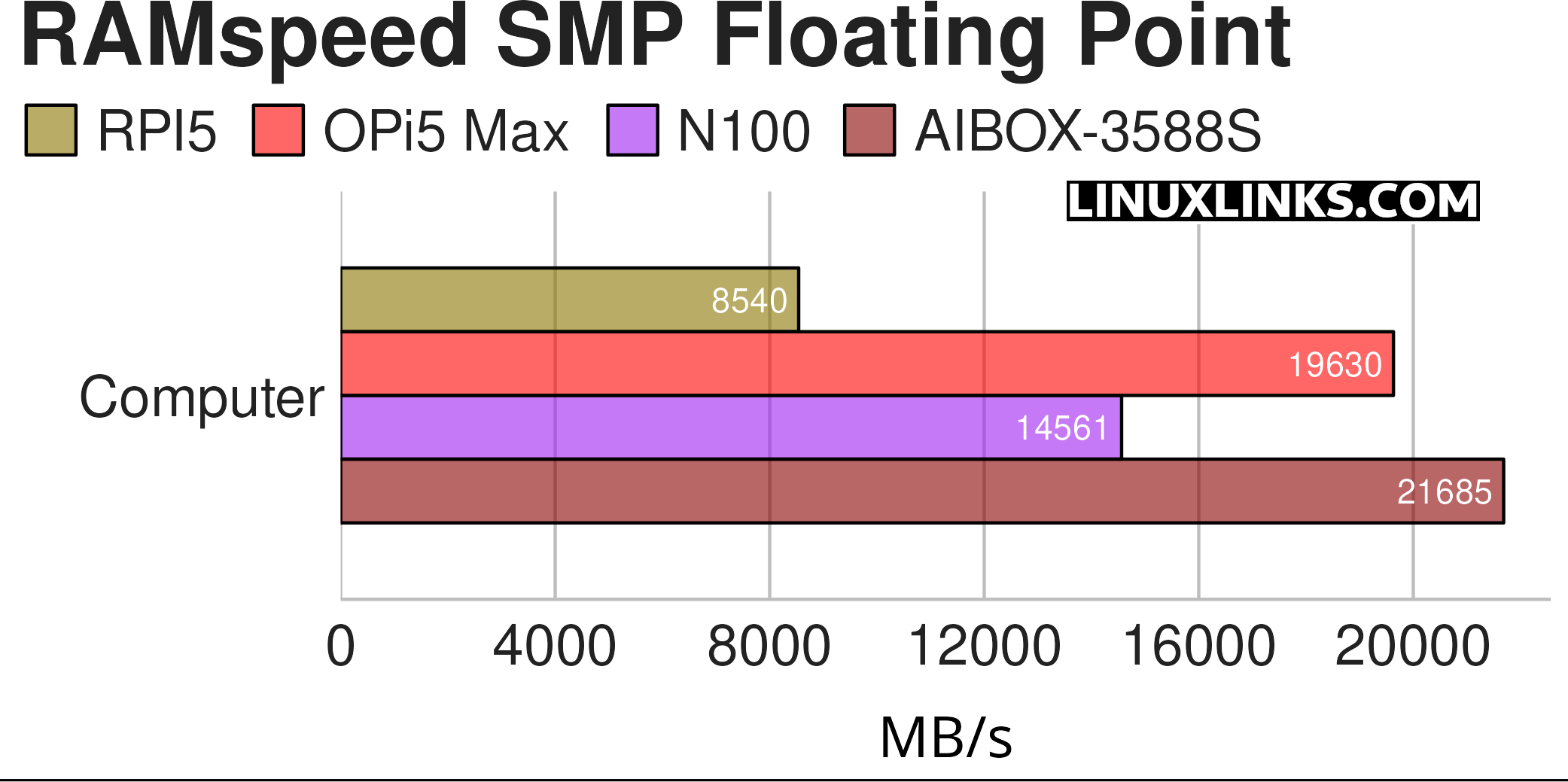
$ phoronix-test-suite benchmark ramspeed
A similar result with the corresponding floating point benchmark. Again the Firefly AIBOX is the fastest in this test.
I’ve also run a few extra benchmarks on the AIBOX.
$ phoronix-test-suite benchmark openssl
OpenSSL is an open-source toolkit that implements SSL (Secure Sockets Layer) and TLS (Transport Layer Security) protocols. This test profile makes use of the built-in “openssl speed” benchmarking capabilities.
I’m only testing the RSA4096 algorithm.
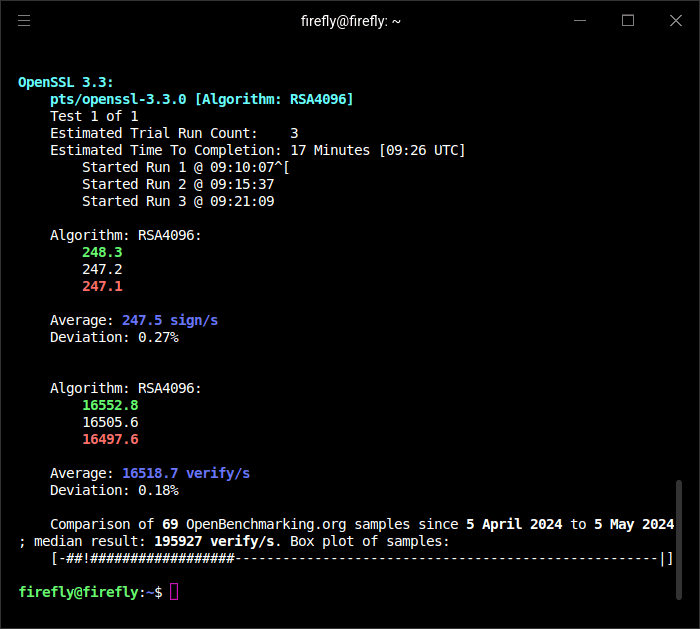
The AIBOX gets an average of 247.5 sign/s and 16518.7 verify/s. In comparison, the RISC-V based Orange Pi R2S gets an average of 109.5 sign/s and 7991.5 verify/s. The AIBOX is therefore more than twice as fast in this benchmark.
$ phoronix-test-suite benchmark compress-lz4
This test measures the time needed to compress/decompress a sample file (silesia archive) using LZ4 compression.
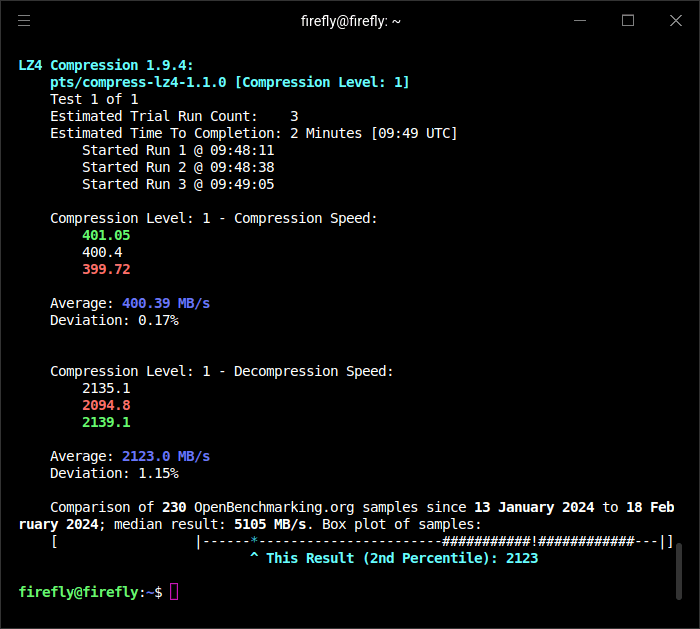
As you can see, the AIBOX has a compression speed of 400.39 MB/s and a decompression speed of 2123 MB/s. The compression speed is nearly 10x faster than an Orange Pi R2S, and about 13x faster when decompressing. I’m impressed by the performance of the AIBOX in this benchmark, particularly given that an AMD Ryzen Threadripper 3990X has compression and decompression speeds of 702 MB/s and 4502 MB/s respectively.
$ phoronix-test-suite benchmark tinymembench
This benchmark tests the system memory (RAM) performance.
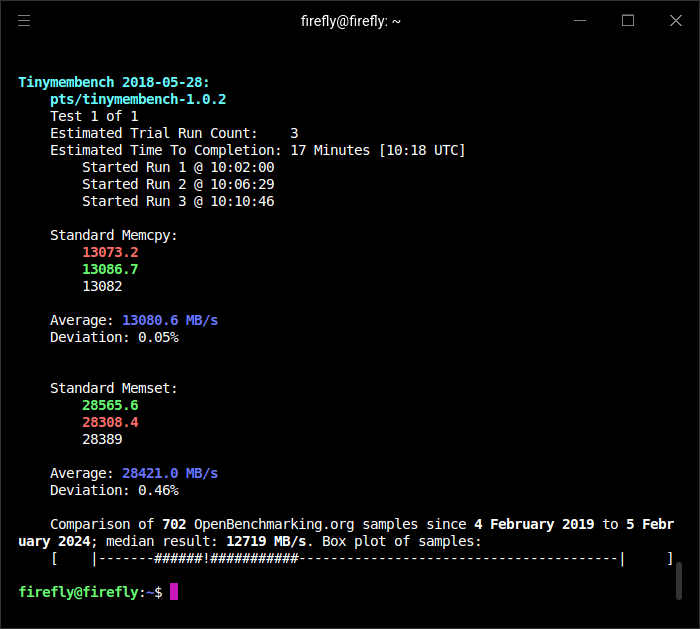
The ABOX gets 13080 MB/s in the standard memcpy test, and 28421 MB/s in the standard memset. Compare that to the Orange Pi R2S’s 2534 MB/s (memcpy) and 7175 MB/s (memset).
In my previous article in this series, I ran a benchmark on the eMMC, and ran a graphics benchmark which are reproduced below for completeness.

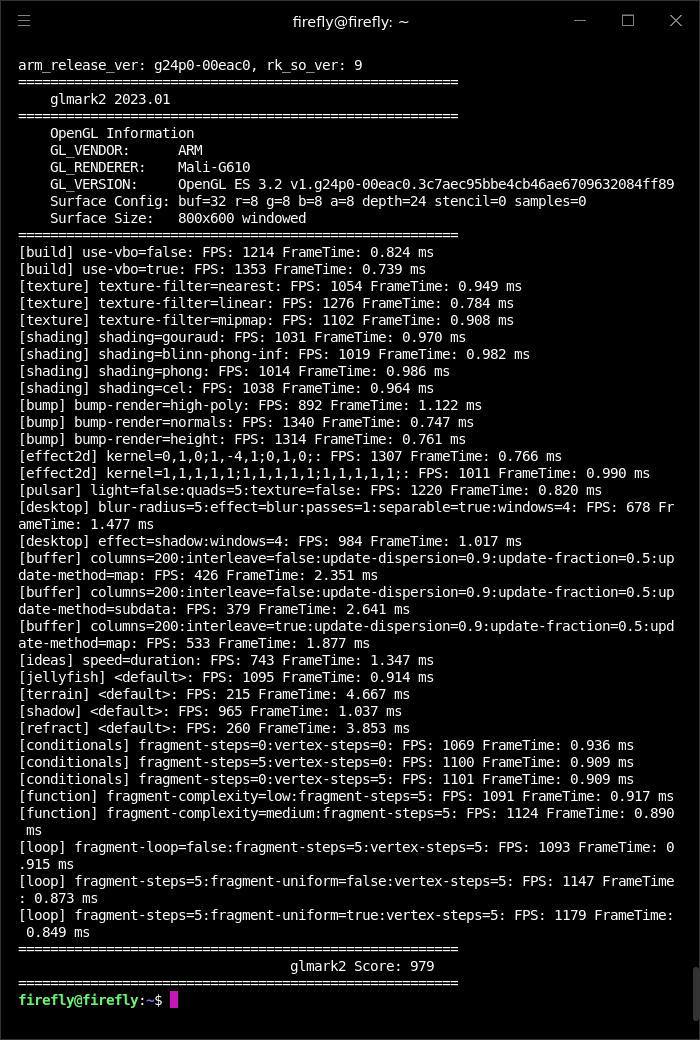
In the next article in this series I’ll look at the AIBOX’s power consumption.
All articles in the series:
| Firefly AIBOX-3588S | |
|---|---|
| Introduction | Introduction to the series and interrogation of the AIBOX-3588S |
| Benchmarks | Benchmarking the AIBOX-3588S Embedded Fanless PC |
| Power | Comparing the AIBOX-3588S power consumption with other SBCs and Mini PCs |
| SSHFS | Access Remote File Systems Over SSH with SSHFS |
| Flatpak | Set up Flatpak to use external disk |
